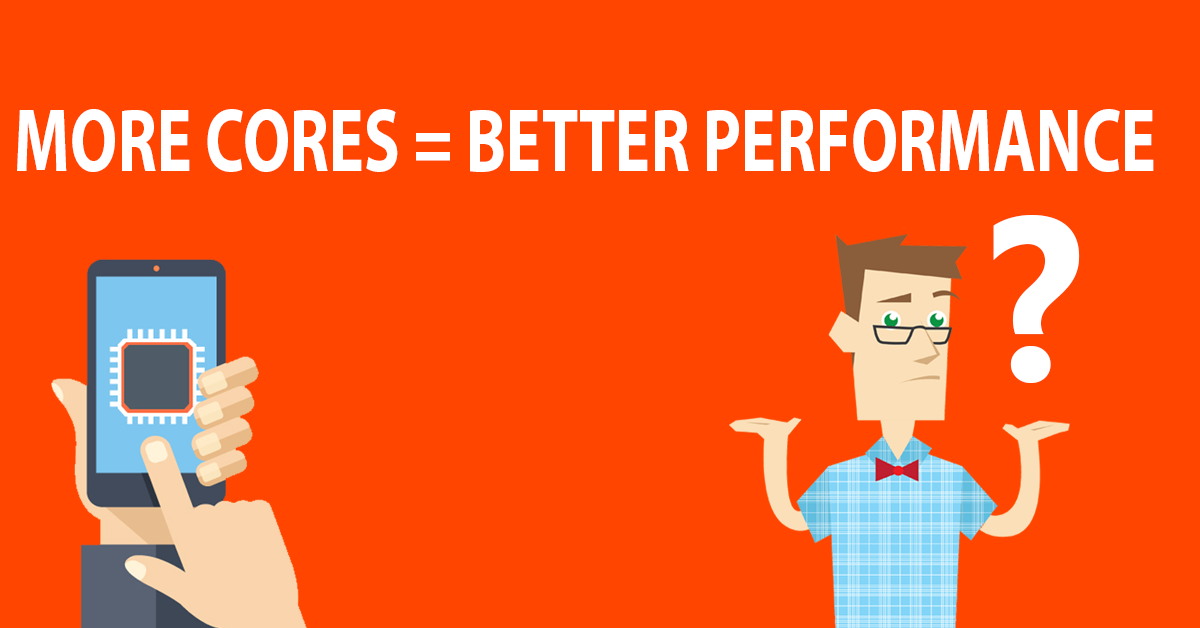
When handphones were first introduced, their primary function was to make communication over phone calls and messages possible. Gradual development in them resulted to the present day smartphones. The smartphones today are possible to send, receive emails; take, share pictures and videos; edit, save documents; play songs and videos and many more functions.
We can say that, now, with the advancement of science and technology, the whole world has come closer. We practically have access to the world community in our palms. From computers that would take up a whole room to desktops to laptops and palmtops, computing devices have gone through a lot of changes in their external features as well as in their internal attributes. Here, we are discussing about smartphones. Or rather specifically, about- the CPU/ processor present in the smartphones.
Every time that you see an advertisement or read a review of any smartphone, you see terms like- “Quad Core processor”, “Hexa Core processor” or “Octa Core processor”. What do they really mean? To understand those terms, you must first know what a processor really is.
First of all, what is a process? A process is a set of steps that one needs to follow to complete a task. To complete any task, one must follow a systematic process. A processor is responsible for handling the processes. Smartphones are highly advanced than simple handphones because they contain advanced processors inbuilt to them. A processor, basically speaking, is a CPU. Just like how computers contain CPU’s that are responsible for the overall functioning of the system, the processors in smartphones are responsible for the functioning of the phones. Here, we have graphics processing unit (GPU), memory, peripheral buses as well as other sub-processors integrated on a single chip which is referred to as System-on-a-Chip (SoC). This compactness of this CPU is what makes the smartphone’s sleek and classy.
Earlier, devices using only a single processor were developed. But with time, multi-core processors could be accommodated to a single device. This was the introduction of multi-core processors. However, one must understand that the presence of multi-core processors does not mean that the speed of execution of the processes increases. It means that the device is able to execute many processes at the same time, simultaneously.
A core is the main element of the processor that is responsible for executing all the operations. Multiple cores, for instance: dual core- two cores, quad core- four cores; means that the division of processes among the processors can be carried out broadly thus enabling the execution of multiple processes simultaneously.
Nevertheless, processors and multiple cores are not the only aspects that affect the execution of the processes. Various other factors such capacity of the RAM, the capacity of the graphics card, network compatibility and much more are responsible for the justified usage of multi-core processors.
What is the big deal about having more cores powering our smartphones?
Does having a smartphone with octa-processor necessarily mean that your phone is more advanced than the phones with quad-core processors? During the functioning of octa-core processors, the lower-powered set of cores will be employed first. Only when the advanced tasks are to be done, however, the faster set of four cores will kick in.
It is evidently clear that the more powerful a CPU is, the more power it has to draw from a device’s battery. This poses a problem, given that smartphone battery technology hasn’t advanced at anywhere near the rate of mobile processor technology. Therefore, as smartphones have gotten more advanced, the battery life has plummeted. But the majority of smartphone tasks do not require much processing power. However, HD video, gaming, and photo manipulation most certainly do. And thus, the octa-core concept seems to be a practical way to lengthen a modern phone’s battery life without compromising performance where it matters.




















![Best Mobile Phones Under Rs. 15,000 in Nepal [Updated] Best Phones Under 15000 in Nepal 2024 Budget Smartphones Cheap Affordable](https://cdn.gadgetbytenepal.com/wp-content/uploads/2024/03/Best-Phones-Under-15000-in-Nepal-2024.jpg)
![Best Mobile Phones Under Rs. 20,000 in Nepal [Updated] Best Mobile Phones Under NPR 20000 in Nepal 2023 Updated Samsung Xiaomi Redmi POCO Realme Narzo Benco](https://cdn.gadgetbytenepal.com/wp-content/uploads/2024/01/Best-Phones-Under-20000-in-Nepal-2024.jpg)
![Best Mobile Phones Under Rs. 30,000 in Nepal [Updated]](https://cdn.gadgetbytenepal.com/wp-content/uploads/2023/12/Best-Phones-Under-30000-in-Nepal-2024.jpg)
![Best Mobile Phones Under Rs. 40,000 in Nepal [Updated] Best Phones Under 40000 in Nepal 2024 Smartphones Mobile Midrange](https://cdn.gadgetbytenepal.com/wp-content/uploads/2024/02/Best-Phones-Under-40000-in-Nepal-2024.jpg)
![Best Mobile Phones Under Rs. 50,000 in Nepal [Updated] Best Phones Under 50000 in Nepal 2024 Smartphones Midrange](https://cdn.gadgetbytenepal.com/wp-content/uploads/2024/02/Best-Phones-Under-50000-in-Nepal-2024.jpg)
![Best Flagship Smartphones To Buy In Nepal [Updated] Best Smartphones in Nepal 2024 Flagship Premium Samsung Apple iPhone Xiaomi OnePlus Honor](https://cdn.gadgetbytenepal.com/wp-content/uploads/2023/09/Best-Smartphones-in-Nepal-2024.jpg)